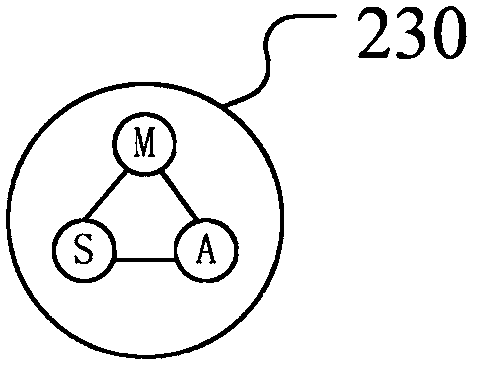Data recovery method, device and system based on distributed system
A data recovery device and a distributed system technology, applied in the computer field, can solve the problems of inability to back up all data, difficult to perform data recovery in a distributed system, and a data recovery method that cannot be applied to a distributed system, thereby achieving the effect of data recovery.
- Summary
- Abstract
- Description
- Claims
- Application Information
AI Technical Summary
Problems solved by technology
Method used
Image
Examples
Embodiment 1
[0022] figure 1 A flow chart of a data recovery method based on a distributed system provided by Embodiment 1 of the present invention is shown. Such as figure 1 As shown, the method includes the following steps:
[0023] Step S110: Determine whether the backup time point corresponding to the data backup of each data fragmentation cluster is consistent with the recovery time point corresponding to the data to be restored.
[0024] Wherein, the distributed system in this embodiment includes at least a plurality of distributed data fragmentation clusters. Specifically, in a distributed system, in order to increase the storage capacity, the data to be stored can be divided into multiple shards, and each shard is stored in a different data shard cluster. Therefore, the specific number of data sharding clusters can be set or adjusted according to the amount of data to be stored, which is not limited in the present invention.
[0025] Specifically, in this embodiment, each data ...
Embodiment 2
[0035] Before introducing this embodiment, first briefly introduce the distributed system in this embodiment. like Figure 2a and Figure 2b As shown, the distributed system in this embodiment includes at least a plurality of distributed data sharding clusters. Figure 2a A schematic structural diagram of the distributed system 200 in the present invention is shown; Figure 2b A schematic diagram of data nodes included in each data sharding cluster in the distributed system 200 is shown.
[0036] Specifically, the distributed system 200 includes a routing node 210 , a configuration node (also called a config node) 220 , and multiple data fragmentation clusters 230 connected to the routing node 210 . in, Figure 2a The illustrated distributed system 200 includes a routing node 210 , and a configuration node 220 . However, in a specific implementation, in order to improve the disaster recovery capability, there may be multiple routing nodes 210 and configuration nodes 220 ...
Embodiment 3
[0067] Figure 4 A structural block diagram of a data recovery device based on a distributed system provided by Embodiment 3 of the present invention is shown. like Figure 4 As shown, the device includes: a consistency determination module 41 , a query module 42 , an operation record determination module 43 , a data recovery module 44 , a backup module 45 and a balanced log acquisition module 46 .
[0068] Wherein, the distributed system in this embodiment is the same as the distributed system in Embodiment 1, including at least a plurality of distributed data fragmentation clusters. Each module in this embodiment will be introduced in detail below.
[0069] The consistency determining module 41 is adapted to separately determine whether the backup time point corresponding to the data backup of each data fragmentation cluster is consistent with the recovery time point corresponding to the data to be restored.
[0070] Specifically, for the determination of the backup time ...
PUM
 Login to View More
Login to View More Abstract
Description
Claims
Application Information
 Login to View More
Login to View More - R&D
- Intellectual Property
- Life Sciences
- Materials
- Tech Scout
- Unparalleled Data Quality
- Higher Quality Content
- 60% Fewer Hallucinations
Browse by: Latest US Patents, China's latest patents, Technical Efficacy Thesaurus, Application Domain, Technology Topic, Popular Technical Reports.
© 2025 PatSnap. All rights reserved.Legal|Privacy policy|Modern Slavery Act Transparency Statement|Sitemap|About US| Contact US: help@patsnap.com



